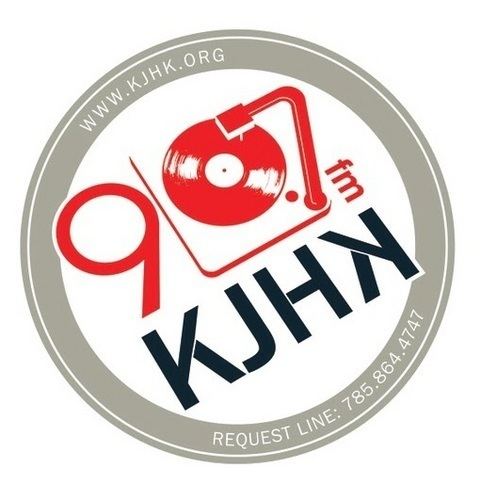Broadcast area Northeast Kansas ERP 2,500watts Callsign meaning KansasJayHawK Frequency 90.7 MHz Slogan The Sound Alternative | First air date 1952 on AM, 1972 on FM HAAT 85 meters Webcast Listen Live City of license Lawrence | |
 | ||
Area Kansas, Topeka, Kansas City metropolitan area Call sign meaning The Jayhawk, mascot of the University of Kansas | ||
Kjhk documentary
KJHK 90.7 FM is a campus radio station, located in Lawrence, Kansas at the University of Kansas. On December 3, 1994, the station became one of the first radio stations to broadcast a live and continuous stream over internet radio. It currently broadcasts at 2600 watts, with a broadcast area covering Lawrence, parts of Topeka, and Kansas City. The station is overseen by the KU Memorial Unions, but is completely run by KU students.
Contents
- Kjhk documentary
- Kjhk documentary part 2
- 1950s 1970s
- 1980s
- 1990s
- 2000s
- KJHK today
- Awards and achievements
- References
Kjhk documentary part 2
1950s-1970s
KJHK's roots go back to 1952, when KDGU signed on as a carrier current station on 630 AM. In 1956, it changed its calls to KUOK. Wilt Chamberlain hosted his own show on the station during his days as a KU student.
By the 1970s, the popularity of the station was outgrowing its limited range and on October 5, 1975 the Federal Communications Commission (FCC) gave final permission to broadcast at 90.7 megahertz, and granted the station the new call letters "KJHK". On October 15, 1975, Steve Doocy played the first song at 12:25 P.M., broadcasting at 9.9 watts. In 1978 a bored staffer wrote a fake news report claiming a nuclear reactor explosion destroyed Waterloo, Iowa killing 15,000 people. Another staffer found the report and read it on air. The news was picked up by other organizations causing panic and was mentioned that night on the CBS Evening News by Walter Cronkite on how a single radio station "blowed up" Waterloo. The writer of the story was suspended for one semester before being promoted to news director the next fall.
1980s
In 1987, KJHK was granted a power increase to 100 watts. In 1988 the FCC fined the station after an excited DJ said "Fuck you Billy Tubbs!" multiple times after the KU men's basketball title game against Oklahoma. This led the school administration to remove music with expletives. The administration also prevented Ku Klux Klan members to come on the air for a show on race citing security issues. Angry students protested what they saw as a censoring of free speech with some going as far as to make anonymous death threats.
1990s
On December 3, 1994, the station became one of the first in the nation to broadcast a live, 24-hour signal on the internet. In 1995 KJHK changed its tagline from "The Sound Alternative", which it started using in 1976, to "The Hawk", because of alternative's association with top 40 music. In 2000, it reverted to "The Sound Alternative". The station increased its signal to 2600 watts in 1998.
2000s
In 2003, after 28 years of supervision, the William Allen White School of Journalism decided that it could no longer support the station's operational budget. Fortunately for the station and the Lawrence community, KU Memorial Unions agreed in 2004 to take up oversight of the station. KJHK today is funded in-part by the KU Student Senate Media Fee as well as through donations by local businesses and private individuals. In 2005 KJHK celebrated its 30th anniversary by bringing a diverse group of artists to Lawrence such as Mates of State, LCD Soundsystem and Chuck D of Public Enemy.
KJHK today
The station currently has over 150 student volunteers, and continues with independent music as its charter and format. On May 5, 2010, KJHK moved from its longtime home, "The Shack", to newly constructed studios in the Kansas Union. The studios were renovated in January 2017.
